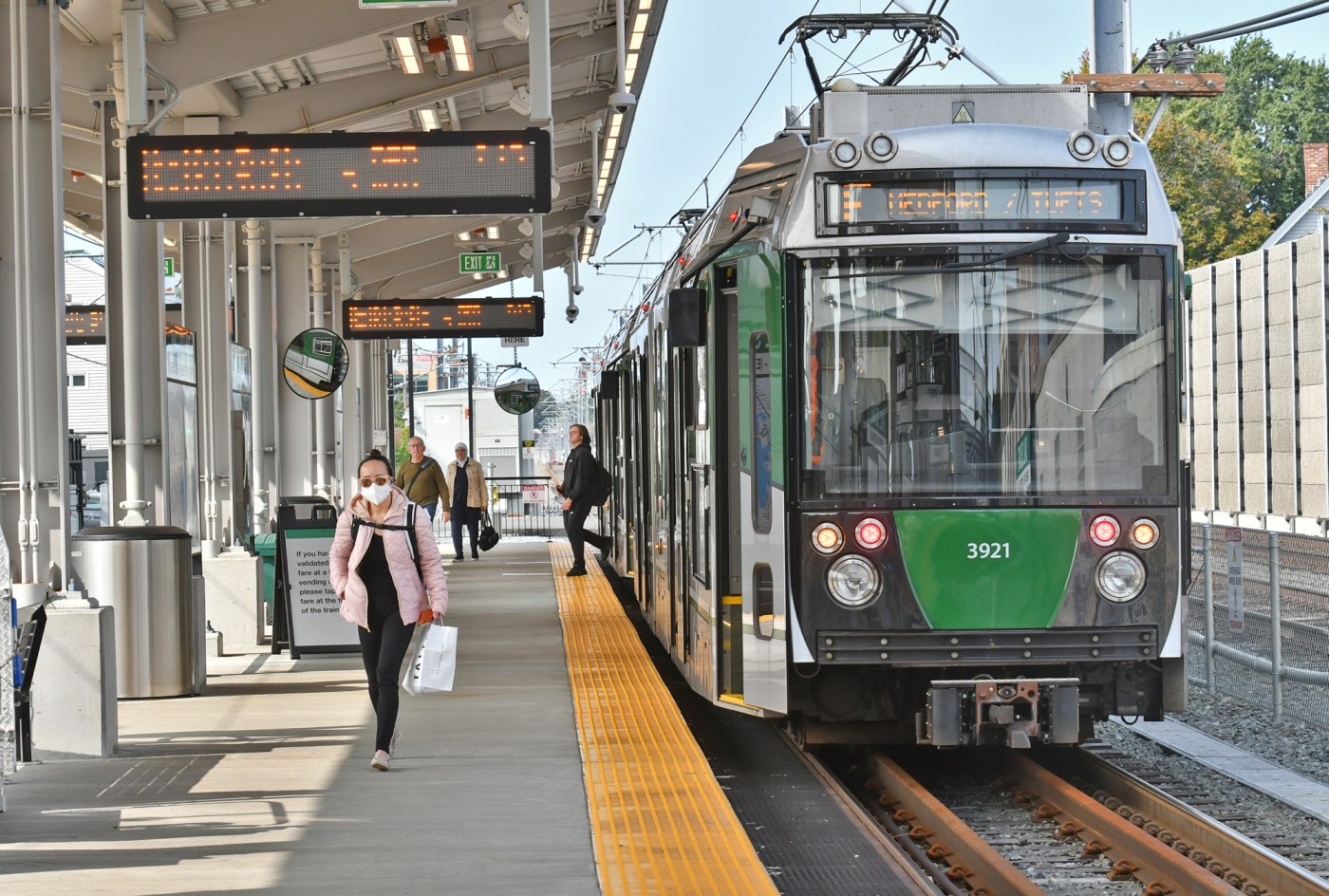
Green Line Extension to celebrate its one-year anniversary with service disruptions
The Medford-Tufts branch of the Green Line Extension opened with great fanfare on Dec. 12, 2022, a milestone decades in the making that officials promised would bring reliable transit service to suburbs just north of Boston.
The project that cost the state $2.3 billion has not brought a smooth ride for commuters relying on the line’s five stops in Medford and Somerville.
Riders will continue to feel disruptions on Tuesday, one year to the day that the GLX opened.
Work to regauge the track, which MBTA officials knew as far back as April 2021 was defective and too narrow, will not be completed by Monday, as initially anticipated under a plan presented by project contractor, GLX Constructors.
That means riders will be forced to forgo train service, and, instead, hop on shuttle buses beginning each night at 8:45 for at least the next week, with the MBTA granting the contractor an additional seven nights to continue the work, General Manager Phillip Eng announced Friday.
The highly-publicized work on both Green Line Extension branches, including Union Square, began the night of Nov. 27 and was expected to wrap up Sunday.
Both the Medford-Tufts and Union Square branches were completed and opened under the Baker administration, before Gov. Maura Healey took office and Eng’s appointment.
“We are disappointed that they could not complete their work on the Green Line Extension on the timeline that they previously projected and, at our direction, they will be bringing in more resources, including more crews,” Eng said in a statement.
“We apologize to riders for this inconvenience,” he added, “and we will continue to do everything in our power to deliver the longer-term, safe, and reliable service that they expect and deserve.
Eng has pledged the public would not carry the burden of paying for needed repairs and that the MBTA would report progress and any potential plans to further disrupt service in completing the work.
“The MBTA has directed (contractor GLX Constructors, or GLXC) to provide additional resources to accelerate the repair work,” a release states. “Following GLXC’s request for additional evening suspensions in GLX service, the MBTA also directed GLXC to submit the complete list of their staff, staff experience level of the on-site workforce who will be committed and held accountable for completing the work.”
Eng, who disclosed the narrow-track conditions on the Green Line Extension in September, said at a Nov. 16 board meeting that construction aimed to eliminate the issue “once and for all.”
The so-called early-access diversion, Eng said, “would give the design build team appropriate hours, eight hours, to have a full shift and accomplish this work in the most expeditious manner, most cost-efficient manner and allow us to minimize the impact to the traveling public.”
Disruption to the extension is part of a larger project also aimed at eliminating speed restrictions on the beleaguered line.
The setback continues a series of headaches felt along the project, which officials estimated would serve 50,000 riders each day and take about 45,000 car trips out of traffic.
Healey in October called out the “poor judgment” of officials overseeing the project, insisting the agency is now staffed with officials who take their “responsibility seriously.”
“Under the prior administration, senior management at the T, for whatever poor judgment, made the decision not to disclose identified failures and then made the poor decision not to address those failures prior to the opening of the Green Line extension,” the governor said.
Healey’s remarks came days after Eng announced that narrow tracks throughout half of the Union Square branch and 80% of the Medford-Tufts branch required repairs but were safe for riders.
Jim Conroy, a political spokesperson for former Gov. Charlie Baker, told the Herald that the governor’s office was “never informed” of the track issues with the Green Line Extension.
“The Green Line Extension project was on track to never get built when the Baker-Polito Administration first took office, and while these setbacks are massively inconvenient for riders, the project itself will deliver enormous benefits for the Greater Boston area for decades to come,” Conroy said in an October statement.
Problems with track condition, maintenance, and alignment, have been at the forefront for months.
A pair of reports released in early September found workers responsible for track inspections had “inadequate training.” Officials detailed inconsistencies in documentation and oversight stretching back years.
The narrow tracks were not the first issue to emerge on the Green Line Extension.
In August, project contractor GLX Constructors sued its engineering firm, claiming faulty designs led to more than $35 million in cost overruns.
That lawsuit, pitting the contractor GLX Constructors against engineering firm STV Incorporated, cited 10 separate instances where design drawings were “replete with errors and omissions,” requiring corrections that resulted in “costly overruns.”
Many of those instances were related to retaining wall design at various points in the project and did not reference track work or width.
Medford Mayor Breanna Lungo-Koehn, in an October statement, worried that the latest troubles for the transit agency would further erode trust in the system.
“We’re doing everything we can on the municipal level to reduce traffic congestion, limit the use of cars and promote green transportation options,” she told the Herald, “but a more effective and time saving commute on the Green Line is what our community really needs.”

